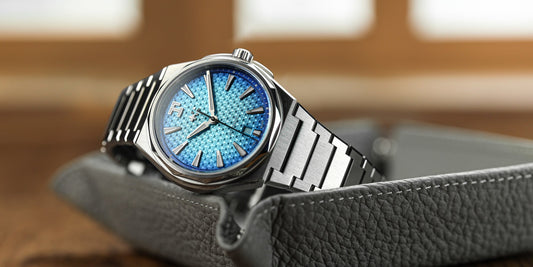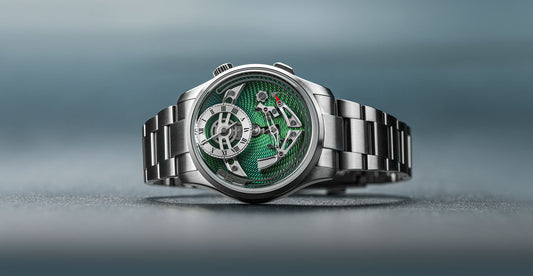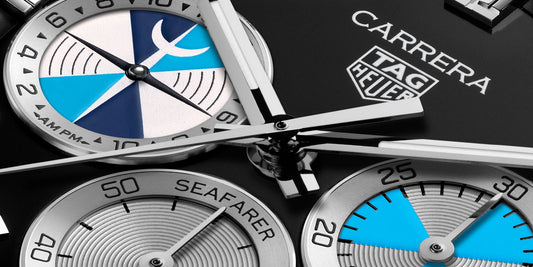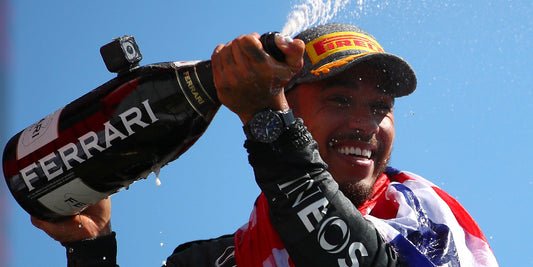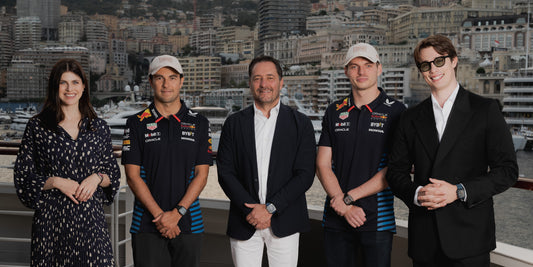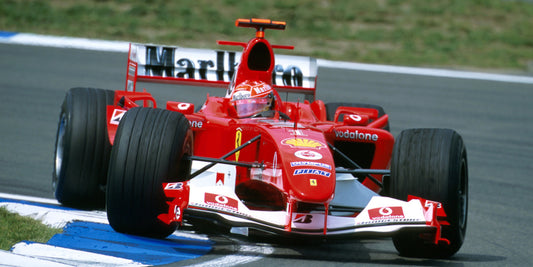We wrap up 2019 with one final celebration to 50 years of one of the most important automatic chronograph...
Of all the icons of enduring cool that are out there, Steve McQueen has to be right up there. And one of the films in which he stands out is the 1971 Le Mans movie, which has been in the news again following the recent release of Le Mans 66 – starring Matt Damon and Christian Bale. If you’ve not seen it yet, check it out: it’s well worth watching (although the sticklers for historical accuracy might want to bring a couple of pinches of salt with them to take during the screening).
The story of Le Mans 66 is all about Ford versus Ferrari, whereas Le Mans is a pure work of fiction, starring McQueen as the imaginary Michael Delaney – racing a Gulf-liveried Porsche (perhaps the car most closely associated with Le Mans throughout all of history).
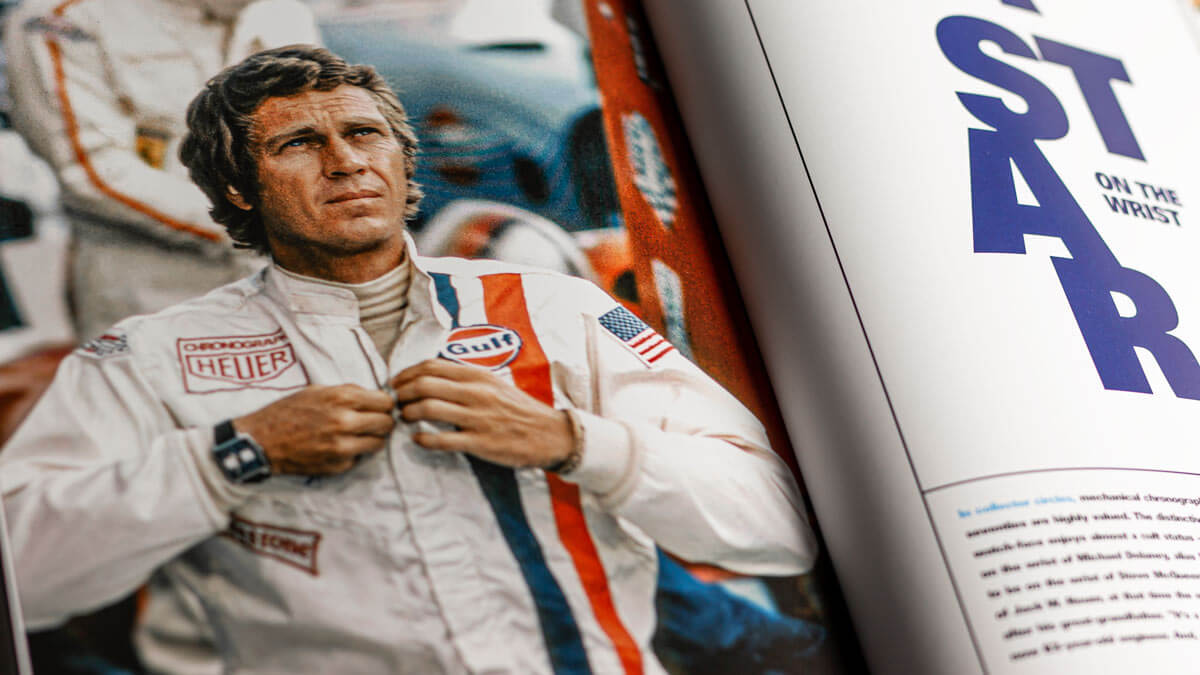
Steve McQueen - Image Credit: WatchGecko Online Magazine [product ids="5114,5514, 5707"]
By the time Le Mans came out, the Monaco had already been on sale for two years. Named after the most famous and unique grand prix circuit of them all, it was strikingly different to anything that had been seen before, with its distinctive square case. But it was more than a pretty face. It was actually the very first waterproof, automatic chronograph to adopt a square design. Now we’ve got used to it, but at the time it was ground-breaking stuff: simply because it’s much easier to make waterproof seals that are circular rather than with corners (the same reason that portholes on ships are round). So nobody had ever tried it before on a watch.
In the late 1960s, Jack Heuer (the grandson of the company’s founder) was aware of a Swiss watchmaker named Piquerez who specialised in water-resistant cases and had just filed a patent for a revolutionary new square wristwatch case. Heuer secured exclusive rights to use it, and the Monaco was born.
The problem is that we all look back at everything through the lens of history. If you put yourself back there in the late 1960s, you’d understand just how iconoclastic the new design was. Think of the most avant-garde watch design that you’ve seen recently: something from Richard Mille, perhaps? The Monaco was far more revolutionary than that.

Steve McQueen and Jo Siffert - Image Credit: Tag Heuer
And the Le Mans film directors were looking for an accessory that would set Michael Delaney apart from the herd: mark him out as an outsider who pushed new boundaries. The Monaco was chosen as the perfect wristwatch. At the time, it retailed for $400, and it was hardly flying from the shelves: it was (quite literally) just a bit too edgy.
The design wasn’t all about breaking the mould though: there were several choices that were born out of practicality, which made it perfect for a racing driver. The hands have red tips to guarantee easy legibility even at speed, for example, and they are luminous so that a 24-hour racer can easily see the time even at night. Set against the deep blue of the original face – all sorts of other editions have appeared since, naturally including Gulf stripes – the time really stands out.
The association between Heuer and Le Mans started through Swiss racing driver Jo Siffert, who had been sponsored by Heuer since the 1960s and was brought in to the Le Mans film set as a consultant, to make sure that everything was realistic. And taking Siffert as their racing driver template (it wasn’t a scene that they were particularly familiar with, so they relied heavily on outside inspiration) the crew accurately transposed his look onto Delaney – right down to the Heuer watch on his wrist.

The original Monaco worn by Steve McQueen in Le Mans - Image Credit: Tag Heuer
The Monaco was chosen as the watch that should be the star of the film, and it figures prominently. Somebody once calculated that it features for a full 15 minutes of screen time: invaluable publicity. For a while, it was the watch to be seen with. But as is the case with several ultra-modern designs, it fell from favour almost as quickly as it had risen to fame. The last of the original Monacos produced was the ‘Dark Lord’ from 1975, and then production ceased. But not for good.
At Heuer, everything changed in 1985 when they became TAG-Heuer, and the new company set to work re-discovering its heritage. The Monaco was re-issued in 1998, just under 30 years since it had first seen the light of the day. The original Calibre 11 movement had been out of production for a long time, so a brand new movement was engineered for the Heuer Monaco Re-Edition as it was called (keeping the original company name, without the TAG, as a tribute). Following the runaway success of this model, it’s been a mainstay of the TAG-Heuer line-up ever since.

The 2015 Monaco Calibre 11 - Image Credit: Tag Heuer [product ids="5114,5514, 5707"]
Nunley takes up the story.
“I got a call from a billionaire, one of the Forbes 400,” he said. “He knew I had the watch and he wanted to buy it. We decided to meet at his estate. We hadn’t talked price yet. He wanted to know if I had any other watches – of historic significance or not – that I might be willing to sell. I did: the last Monaco, a gold Rolex Submariner, a Heuer Carrera, another Heuer chronograph, and three stopwatches used in the film.
“Over coffee we talked about Hollywood, actors, Le Mans, and Steve McQueen. I had a number in mind for all the pieces I had brought. He must have read my mind because he handed me a cashier’s check for that exact amount. But after seeing the Monaco and the other watches, he told me that he didn’t think it was enough. So he had his accountant, who was working in the next room, bring in his personal chequebook while I argued that the first check was more than fair. I told him that if I took any more money I’d just put it into my grandkids' education fund.
“’How many grandkids you got?’ he asked.
“Seven.”
“He proceeded to write a check for a very generous amount intended for each of my seven grandkids. What a gentleman. Who knows, he just might still have the Monaco.”

The Original Monaco presented in the original box - Image Credit: Tag Heuer


